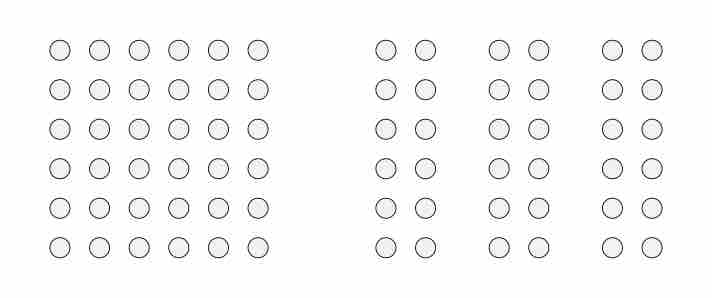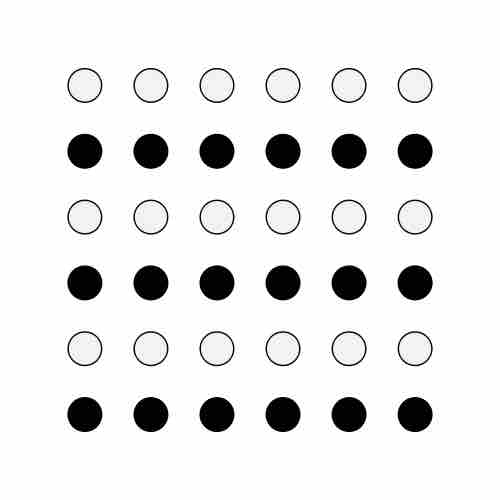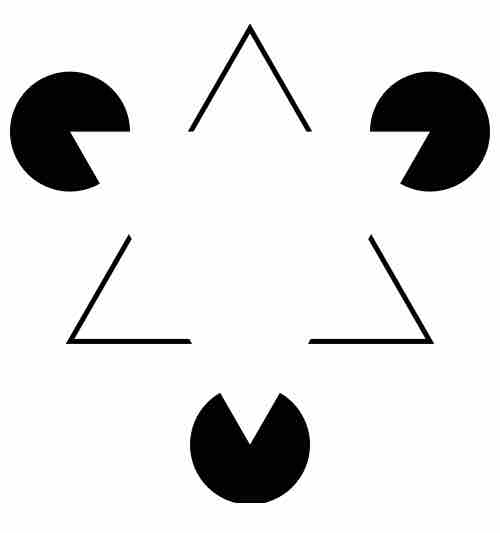After the brain has decided which of the millions of stimuli it will attend to, it needs to organize the information that it has taken in. Organization is the process by which we mentally arrange the information we've just attended to in order to make sense of it; we turn it into meaningful and digestible patterns. Below is a discussion of some of the different ways we organize stimuli.
Gestalt Laws of Grouping
The Gestalt laws of grouping is a set of principles in psychology first proposed by Gestalt psychologists to explain how humans naturally perceive stimuli as organized patterns and objects. Gestalt psychology tries to understand the laws of our ability to acquire and maintain meaningful perceptions in an apparently chaotic world. The central principle of gestalt psychology is that the mind forms a global whole with self-organizing tendencies. The gestalt effect is the capability of our brain to generate whole forms, particularly with respect to the visual recognition of global figures, instead of just collections of simpler and unrelated elements. Essentially, gestalt psychology says that our brain groups elements together whenever possible instead of keeping them as separate elements.
A few of these laws of grouping include the laws of proximity, similarity, and closure and the figure-ground law.
The Law of Proximity
This law posits that when we perceive a collection of objects we will perceptually group together objects that are physically close to each other. This allows for the grouping together of elements into larger sets, and reduces the need to process a larger number of smaller stimuli. For this reason, people tend to see clusters of dots on a page instead of a large number of individual dots. The brain groups together the elements instead of processing a large number of smaller stimuli, allowing us to understand and conceptualize information more quickly.

Gestalt law of proximity
Because of the law of proximity, people tend to see clusters of dots on a page instead of a large number of individual dots.
The Law of Similarity
This law states that people will perceive similar elements will be perceptually grouped together. This allows us to distinguish between adjacent and overlapping objects based on their visual texture and resemblance.

The law of similarity
Because of the law of similarity, people tend to see this as six clusters of black and white dots rather than 36 individual dots.
The Figure-Ground Law
A visual field can be separated into two distinct regions: the figures (prominent objects) and the ground (the objects that recede into the background. Many optical illusions play on this perceptual tendency.

The figure-ground law
In the Kanizsa triangle illusion, the figure-ground law causes most people to perceive a white triangle in the foreground, which makes the black shapes recede into the background.
The Law of Closure
The law of closure explains that our perception will complete incomplete objects, such as the lines of the IBM logo.

IBM logo
The IBM logo plays on the law of closure. While it is made up of just lines, we perceive the three letters.
Organizing People
Human and animal brains are structured in a modular way, with different areas processing different kinds of sensory information. A special part of our brain known as the fusiform face area (FFA) is dedicated to the recognition and organization of people. This module developed in response to our need as humans to recognize and organize people into different categories to help us survive.
Perceptual Schemas
We develop perceptual schemas in order to organize impressions of people based on their appearance, social roles, interaction, or other traits; these schemas then influence how we perceive other things in the world. These schemas are heuristics, or shortcuts that save time and effort on computation. For example, you might have a perceptual schema that the building where you go to class is symmetrical on the outside (sometimes called the "symmetry heuristic," or the tendency to remember things as being more symmetrical than they are). Even if it isn't, making that assumption saved your mind some time. This is the blessing and curse of schemas and heuristics: they are useful for making sense of a complex world, but they can be inaccurate.
Stereotypes
We also develop stereotypes to help us make sense of the world. Stereotypes are categories of objects or people that help to simplify and systematize information so the information is easier to be identified, recalled, predicted, and reacted to. Between stereotypes, objects or people are as different from each other as possible. Within stereotypes, objects or people are as similar to each other as possible.
While our tendency to group stimuli together helps us to organize our sensations quickly and efficiently, it can also lead to misguided perceptions. Stereotypes become dangerous when they no longer reflect reality, or when they attribute certain characteristics to entire groups. They can contribute to bias, discriminatory behavior, and oppression.